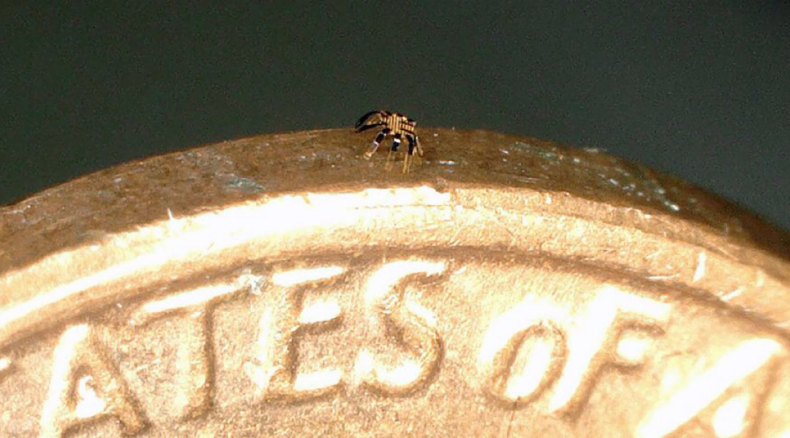Latest Invention
The crab-shaped robot is smaller than a flea and can bend, twist, crawl, walk, turn and jump. Engineers at Northwestern University have built a half-millimeter-wide remote-controlled robot that can bend, twist, crawl, walk, turn and jump. What’s more, the Tiny crab robot does all of this without any actuators, motors, hydraulics, or electricity. The world’s smallest remote-controlled robot is controlled using lasers.

How it was built ?
The engineers built it using a special shape-memory alloy that transforms into a particular shape in its “memory” when heat is applied. The research was documented in an article titled, “Submillimeter-scale multimaterial terrestrial robots,” published in the journal Science Robotics.
“Those joints are initially in a bent configuration like a bent knee. When we locally heat up that shape memory alloy at that joint, it will spontaneously move to recover that initial flat planar geometry,” John Rogers, who led the experiment, told indianexpress.com over a video call. Rogers is the Louis Simpson and Kimberly Querrey Professor of Materials Science and Engineering, Biomedical Engineering and Neurological Surgery at Northwestern University’s McCormick School of Engineering.
“The trick is to figure out how to make it go back into that deformed shape. What we do is, we coat the limb in a thin layer of glass. When the alloy cools back down to room temperature, the elastic resilience of that thin glass coating causes it to bend back to that original bent shape,” added Rogers. The researchers use a focused laser beam to apply localised heat to different parts of the tiny robot in a particular sequence. Due to the properties of the alloy and the small shape of the robot, each “limb” cools down really fast after heat is no longer applied. As the shape of different limbs changes due to this heating and cooling, the robot moves in a particular way, depending on the sequence in which the laser is applied.

Research outcomes
To manufacture the crab, the team first fabricated an initial structure with a flat geometry and then bonded it to a slightly stretched layer of really thin glass. When the stretched layer relaxes, it causes a controlled buckling which shapes the structure into the chosen three-dimensional form.
The researchers also created robots inspired by other creatures including inchworms and grasshoppers. The researchers now want to make such robots capable of carrying out different tasks.













